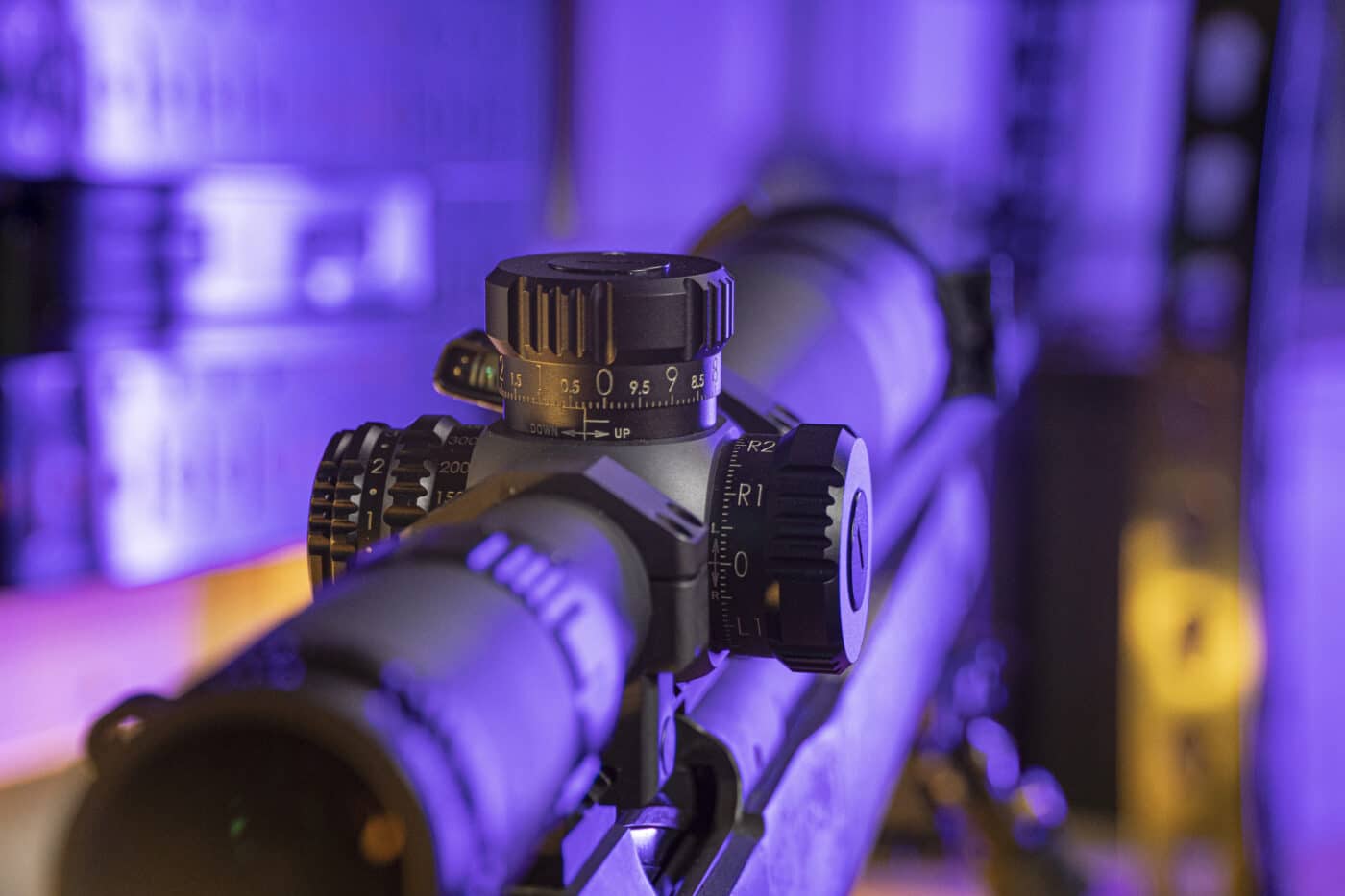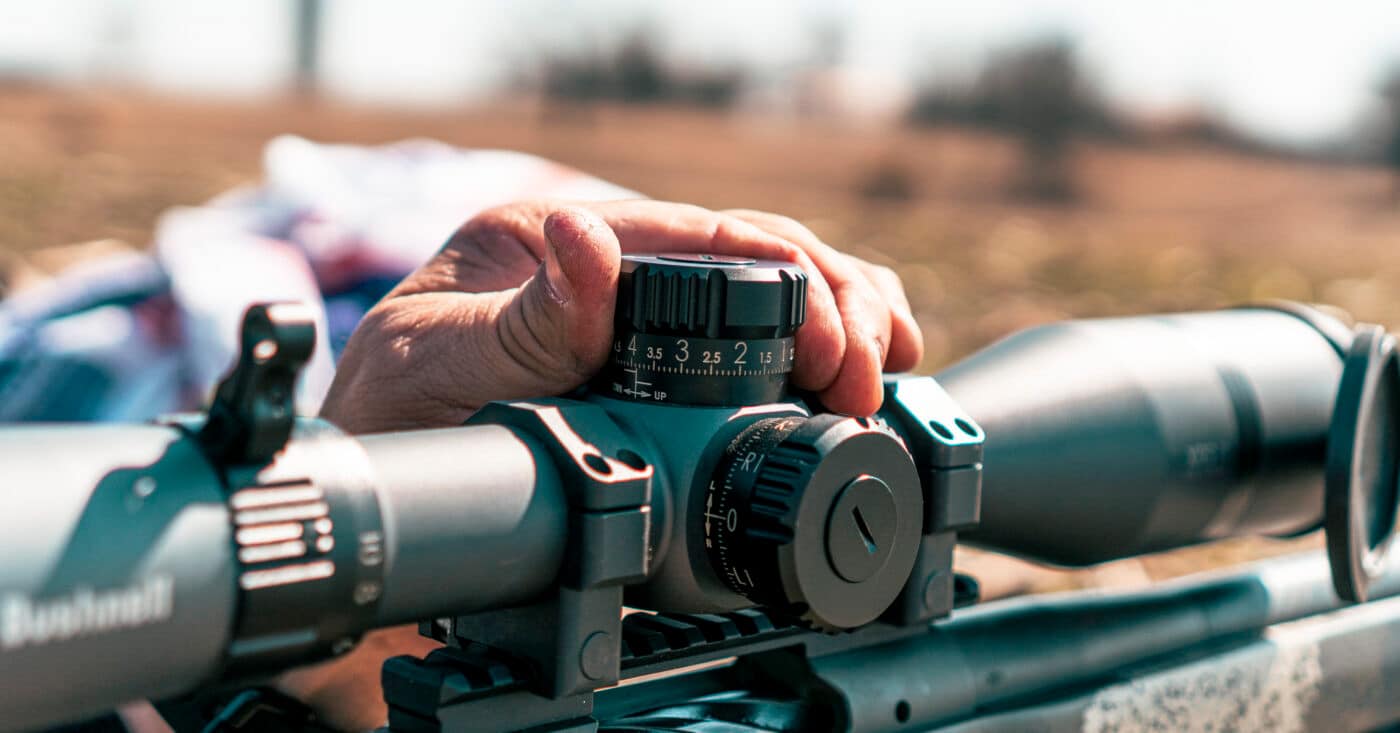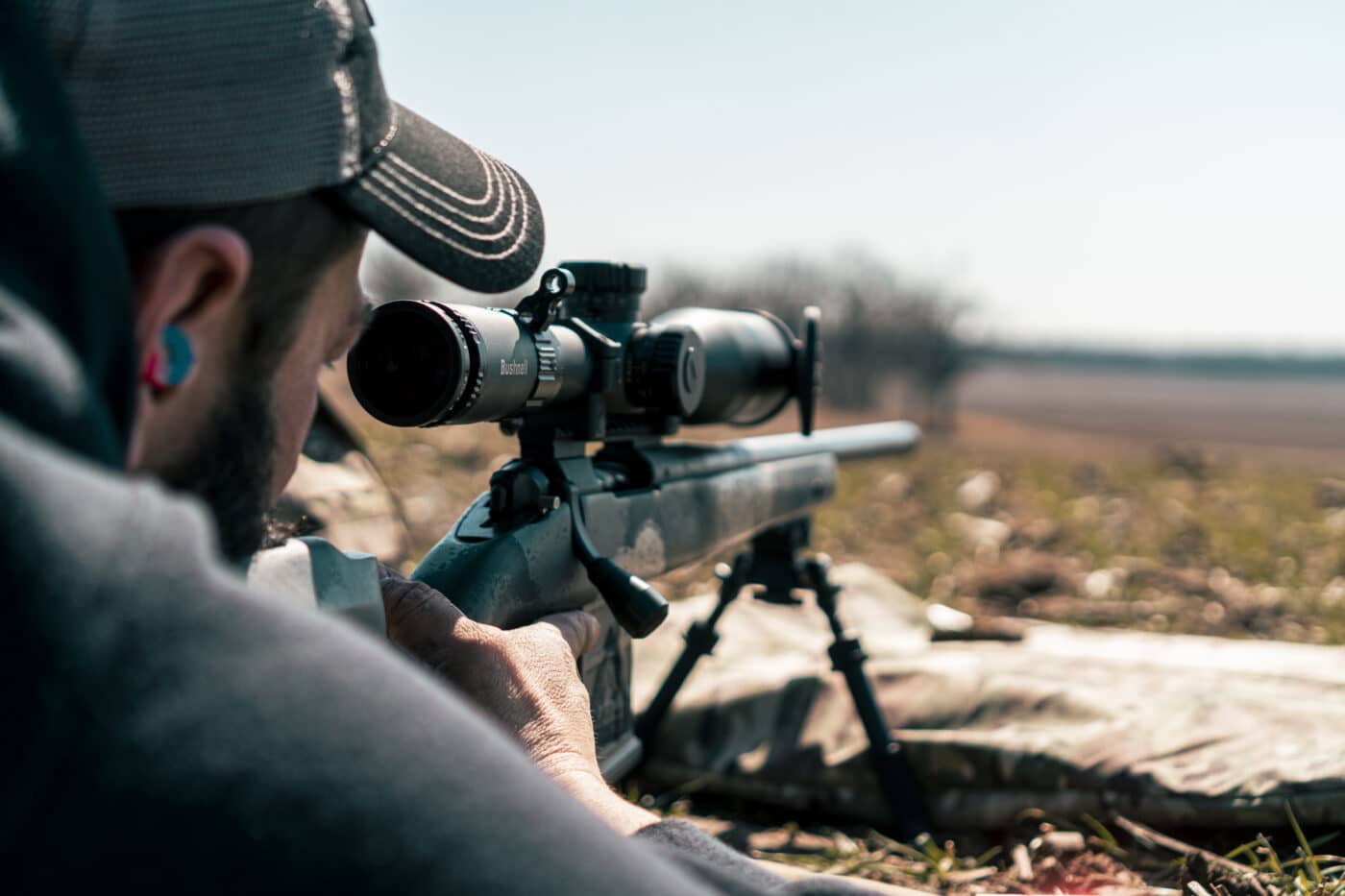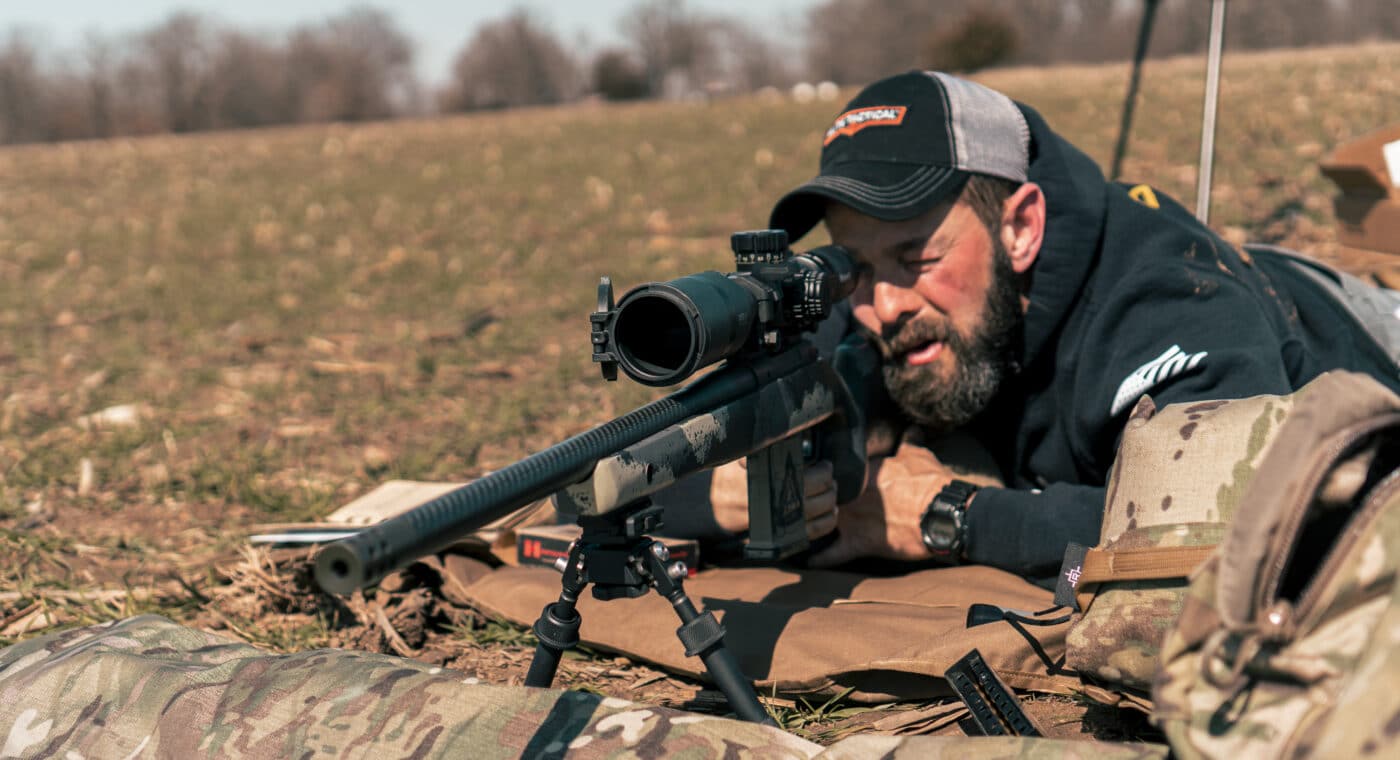Well, three actually.
One thing is certain, you have to adjust your scope to hit that target.
So, how are you going to do it?

In this article and video, the author used aBushnell Elite Tactical XRS II 4.5-30x 50 scopeon aSpringfield Waypoint rifle.
Do You Dial?
The first option is dialing the scope.
Since this measurement is applied inside the scope by the mechanical features, this is an exact process.

The oversized knobs on the Bushnell Elite Tactical XRS II scope allow for easy adjustments in the field.
Then, it’s possible for you to shoot with confidence.
Here is the con to that.
Lets imagine this: a huge trophy whitetail buck steps out just on the edge of the brush.

Settled in behind the Waypoint rifle, the author looks through the Bushnell scope in preparation of taking a shot.
Or, a sniper is engaging a threat.
He looks away, and the target has disappeared or taken a dangerous action.
Holding Out
Our second method is holding the scope to hit the target.

Although it may not be as accurate, many shooters prefer to hold over in a dynamic situation.
For this to work, you have to have a reticle option with MIL holds.
It also requires you to hold it steady and shoot at that exact hashmark.
Now lets imagine that hunting scenario again.

Since you held it, you saved mere seconds, but it saved your hunt.
Now, lets think about this.
Lets say your target needs 15 MILS of elevation, but your scope only adjusts for 10 MILS.

The solution here would be to dial all the way to 10 MILS and then hold for 5 MILS.
This will put you right at 15 MILS.
If you practice both methods, and you do need to be good at both.
you’ve got the option to stretch your ability beyond your knobs and beyond your reticle.
Conclusion
Should you use dialing, or holding?
The answer for us is both.
Its not really dialing versus holding.
We need to change our way of thinking about dialing and holding.
By employing both, we can manage our time better and become even more effective behind the rifle.
Go to forum thread




